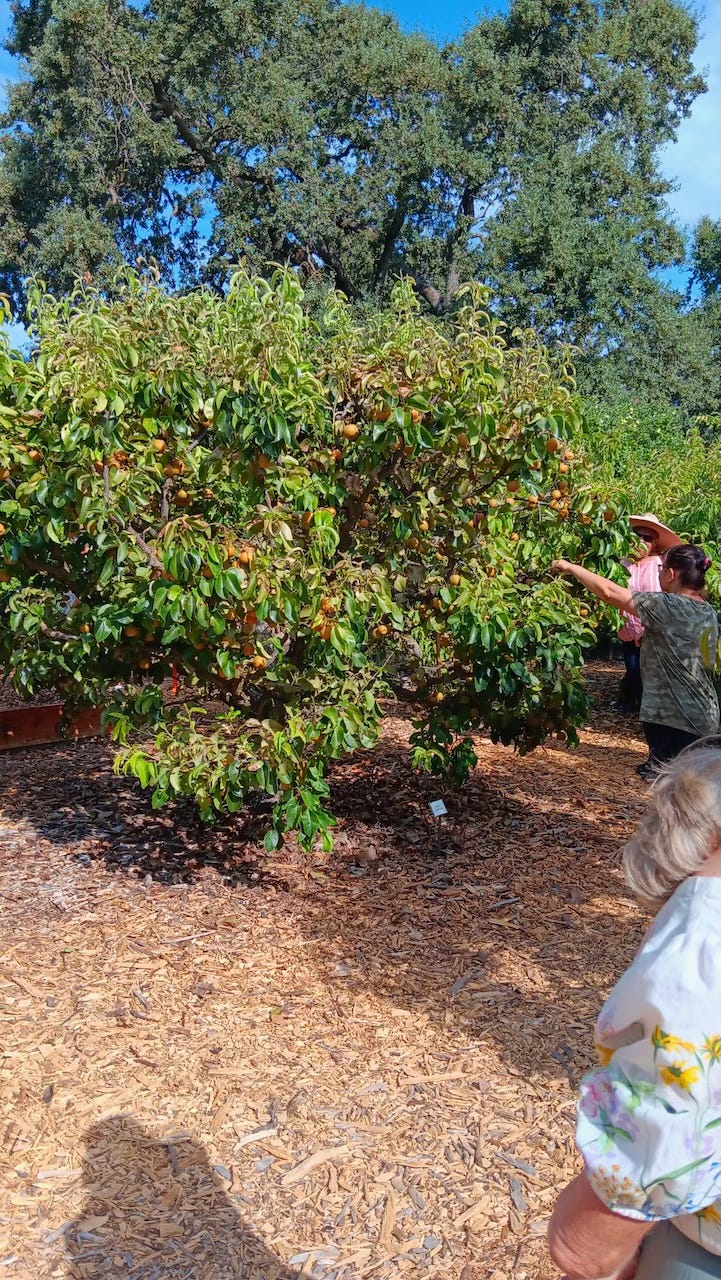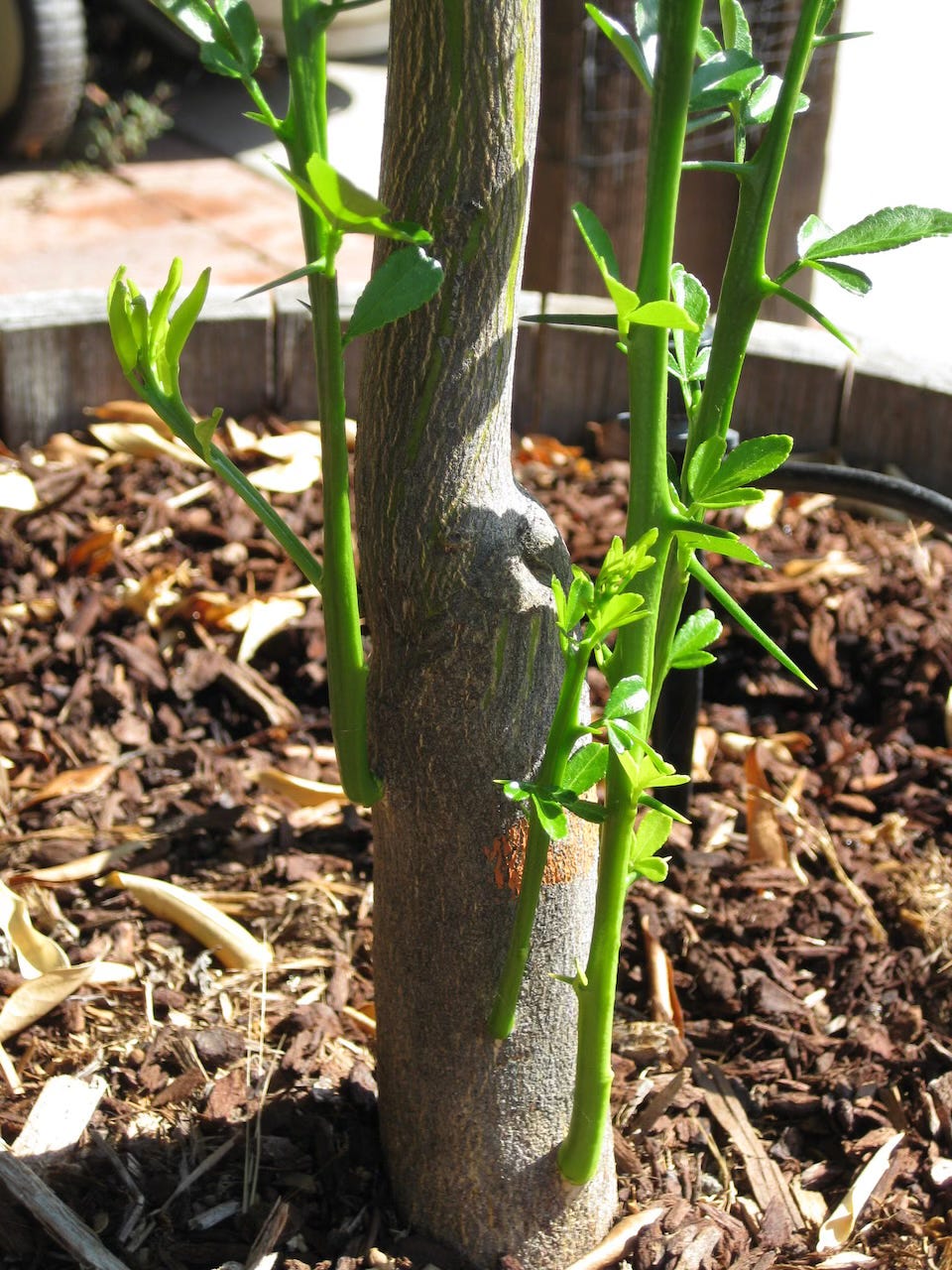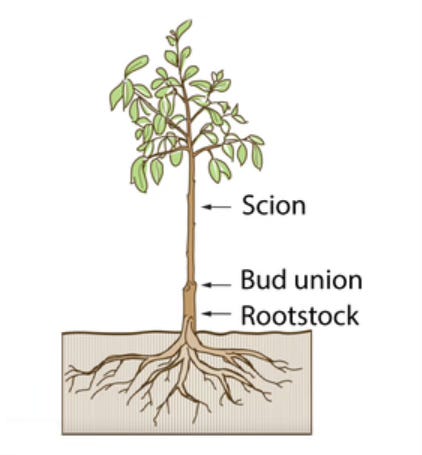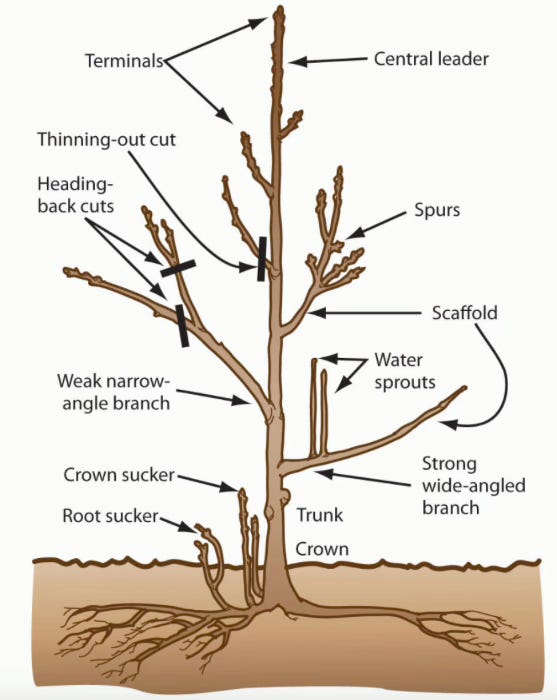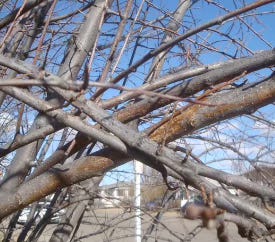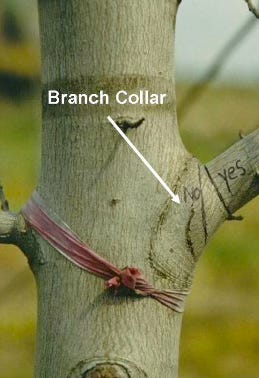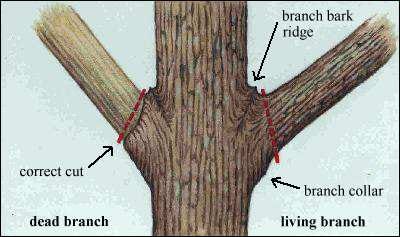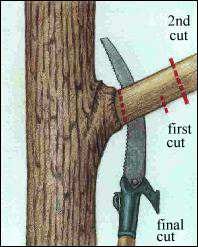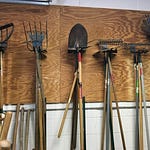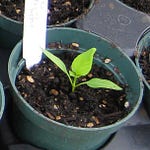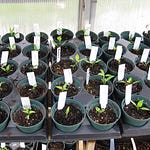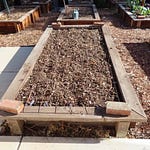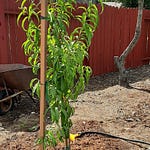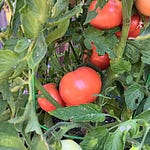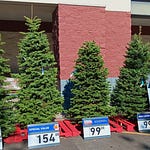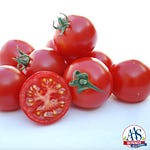Today’s Newsletter Podcast features Ann Ralph, author of the book, “Grow a Little Fruit Tree”.
Fruit Tree Pruning, Step by Step
Last Friday’s Garden Basics with Farmer Fred podcast, Episode 351 - “Honey I Shrunk the Fruit Trees” also dealt with the benefits of keeping the height of fruit trees to no taller than you can reach to the top of the tree to pick fruit. Because, who wants to fall off a ladder?
UC Cooperative Extension Communications Specialist - and Consulting Arborist - Kevin Marini walked us through the steps of keeping your fruit trees healthy, and at a reasonable height (listen to the episode for his tree reduction tips).
Among our topics:
• Maintaining the height of fruit trees at a manageable level allows for easier fruit harvesting and reduces the risk of broken branches.
• Thinning fruit trees is necessary to remove crowded fruit and allow the tree to breathe, resulting in bigger and juicier fruit.
• Bringing down the height of a fruit tree can be done gradually over a few years to avoid stressing the tree.
• Using the right pruning cuts, such as reduction cuts and thinning cuts, helps maintain the structure of the tree and promotes better fruit production.
• Cutting newly planted fruit trees at the knees stimulates the growth of lower branches and makes fruit more accessible.
• Rootstock selection is important for controlling the height and spread of fruit trees.
• Thinning cuts are essential for improving air circulation within the tree and ensuring fruit production in lower areas of the branches. Pruning suckers and water sprouts is essential to maintain the structure of fruit trees.
• Removing branches that grow towards the center of the tree helps prevent overcrowding and disease.
• Cutting dead, dying, and diseased branches is important to maintain the overall health of the tree.
• Proper pruning cuts, including the three-cut method for larger branches, help prevent damage and decay.
• Using sharp pruning tools and cleaning them regularly improves the efficiency and effectiveness of pruning.
You can listen to our complete conversation here.
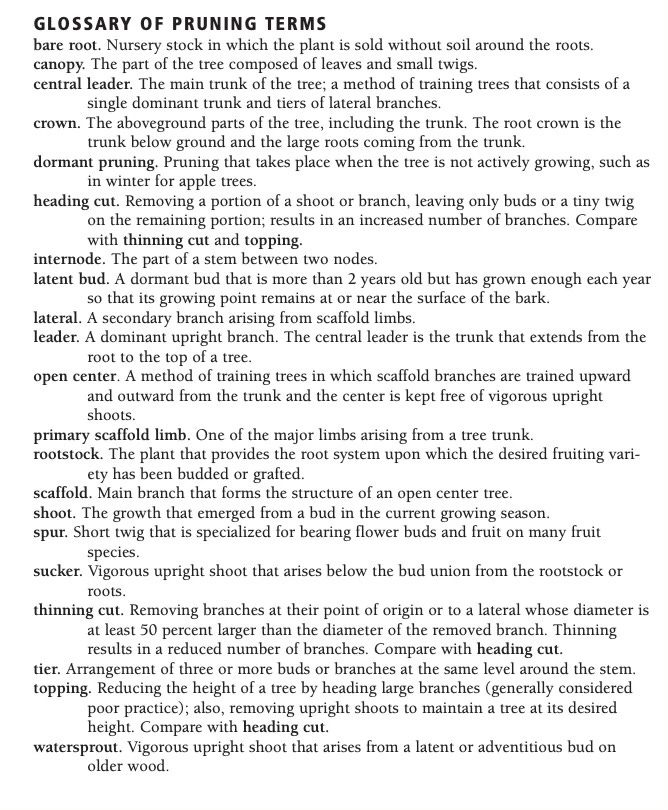
And one more pruning term, according to the U. Of Florida: Reduction Cut
A reduction cut (also referred to as a drop-crotch cut) shortens a branch by removing a stem back to a lateral branch that is large enough to resist extensive disfunction and decay behind the cut. This is generally interpreted as cutting back to a lateral branch that is at least one-third the diameter of the cut stem. Sprouts commonly follow a reduction cut. In most cases these should not be removed because they help the retained portion of the branch retard decay. When the branch that remains is less than about one-third the diameter of the cut stem, the cut is considered a heading cut. Heading cuts are not considered appropriate in most instances in the landscape. Heading cuts are sometimes necessary when attempting to restore trees following storm damage.
Kevin Marini’s Steps for Pruning Your Fruit Trees For Better Health
From the Ep. 351 podcast transcript:
Farmer Fred
Kevin, you mentioned there are some steps, like four or five steps, when it comes to reducing the height of a fruit tree?
Kevin Marini 35:28
Yeah, well, let's start with one that maybe doesn't reduce the height, but it's the easiest step. And everyone could do this any time of year. And they don't even have to be very careful about where they make the cut. And that is the suckers.
Because fruit trees are grafted on to a root stock, you get suckers that grow up from the ground from the root stock. Believe it or not, this can be a big problem. Because if you let those suckers continue to grow, they can eventually convince you that they're part of your fruit tree until you actually see this weird looking fruit on them. And you realize, Wait, what's that all about? Prune out those suckers. Step number one, go out to your fruit tree anytime during the year. If they're shooting from the ground, obviously, from the root stock below the graft union, cut them out, do not let them take over your tree. So that's easy. Step number one.
Farmer Fred 36:21
Yeah, let's define that. First. For people who are trying to find the bud union, if a tree was planted properly, that's going to be like a little lump or a little bump that should be just a few inches above the surface of the soil. And so anything that is emanating from below that point, can be removed completely and safely.
Kevin Marini 36:39
Yes, I'm actually glad you drilled down on that a little bit, because one thing that I have encountered quite a bit is that people bury the graft union. So they buy their fruit tree in a container. And the graft union is above the soil line when they bring it home. But when they pop it out of the container and put it into the ground, many times they'd bury it too deep. And if that graft union is subsurface, if it's underneath the ground, it can absolutely quickly rot. And then you can lose your fruit tree in a nice stiff wind down the road. That's super important, The graft has to be above ground. It has to be daylighted. You really have to take care of that, right? Ideally, you don't want it facing west, where the afternoon sun is hammering it, you kind of want it facing the other way. It's not a deal breaker, if you didn't do that. Don't worry, folks. But having that graft union up above ground and then controlling any sucker growth from below that coming from the ground, from the rootstock, or just beneath the graft on the stem, is important.
Farmer Fred 37:44
Yep, there are other suckers - I don't know if this is unique to citrus or not - they're called water sprouts, that can just spring up almost anywhere in the tree. But the thing with them is they're growing straight up. And they're easy to spot and easy to remove.
Kevin Marini 37:59
So that is I would say your step number two. So you start with your suckers down below, get rid of all those, get them out of the way. Some of them can be quite thorny, and vicious as well, especially on citrus. And so then you're looking for these other type of suckers called water sprouts. They generally occur as vigorous vertical shoots on lateral branches. So branches that are going out relatively in a horizontal fashion, they will have these sprouts that vertically shoot up to the sky. On certain plums and cherries, sometimes these water sprouts can be seven, eight feet in length. I mean, they can completely destroy this beautiful structure that you're trying to work on with this fruit tree. Identifying those water sprouts and getting them out of there is super important. You know, some people will use water sprouts to rejuvenate fruit trees. That would be getting really technical here. We're not going to go into that, but I just want to point out that they could have a use in certain circumstances. But overwhelmingly in our backyard orchard, you see a waterspout, it should be taken out.
So, let's talk about number three. Okay, so you've got your suckers, got your waterspouts right. So now you're going to start actually looking for some problem children. Okay, what are the problem children? Well, those shoots that are going into the middle of the tree that you spoke about earlier, are probably I call them problem children. By themselves. They're just little shoots the branches and you might not think anything of them. But for me, trying to maintain a certain structure to the fruit tree, those can really muck it up very quickly. They really become cumbersome to deal with, if you really let them grow in there, you really have to get in there and find their origin and cut them out and yank them out. And it can be a little troubling. So I say, stay on top of this, those branches that are crossing, rubbing, and then going from branches into the middle of the fruit tree, get those out of there. They are pretty easy to identify and remove. Now, of course, there's also I mentioned the crossing, rubbing, those aren't necessarily only branches that are going towards the middle of the fruit tree, those are branches that are just growing too close together. And if they're touching already, with a fruit load, it's even going to be worse. And they can create wounds, which then of course lead to potential disease. So you don't want that.
And then of course, the next step is those dead, dying, diseased branches. If you know a branch is dead, cut it out of there, don't let it be a host for other bacteria or fungi that could reinfect the live tissue somewhere on the planet from the tree. If it's dying, if you see something dying back, sometimes the best thing to do is to prune that puppy out quickly, potentially stopping the infection in its tracks. Right? Those four or five quick tips, if everyone just did those, the fruit trees would be in good shape. For the most part, you still would probably have to do what we talked about in the beginning, which is reduction cuts, and a mix of dormant and summer pruning to keep that height down. But those easy steps - like walk out to the tree - and take out suckers, water sprouts, branches going towards the center, dead, dying, diseased, crossing, rubbing. Five. So there it is, you do those five things, you are doing way more than most people do.
A Few Q&A’s about fruit tree pruning:
• How far back should I prune my deciduous fruit trees?
The latest trend for backyard orchardists: keep your fruit trees no taller than you can reach. All the fruit above your extended arms, after all, is for the birds. For fruit trees five years old and less, this is fairly easy to do. For older, taller established fruit trees, remove one-third of the total tree height each year until the desired height (under ten feet) is achieved.
• How much of a branch should I cut?
Never cut back a healthy branch of any tree by more than one-third its entire length. Don't make a "flush cut" (removing a branch right next to the stem). Leave the nub or "branch collar" that protrudes out less than an inch from the stem. That area contains the chemicals necessary for the tree wound to heal.
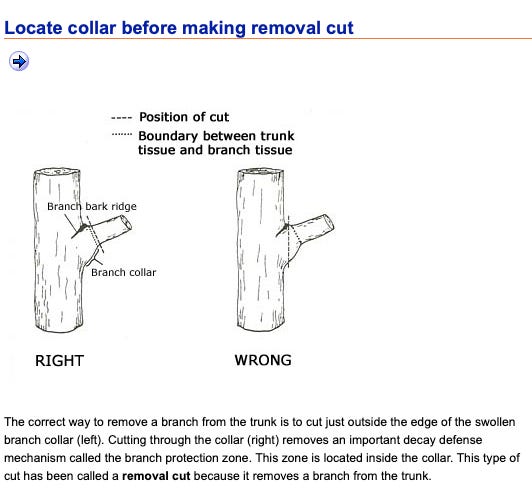
If in doubt what to cut, especially when the branches are out of easy reach, don't hesitate to call in a tree pruning professional.
• How Do I Prune a Thick Branch?
Don't try to get rid of any branch thicker than an inch with just a single pass of the saw; you could end up with a fallen branch that may have removed more than you had anticipated, such as a strip of the main stem. When tackling the big branches, use the three-cut method with a pruning saw:
•Cut number one: make a cut halfway through the underside of the branch to be removed, about one foot out from the collar where the branch attaches to the main stem.
•Cut number two: Saw through the top of the branch, about two inches farther out from cut number one. The branch should give way about half way through this cut, with the undercut portion preventing any damage to the tree along the stem.
•Cut number three is the clean up cut, sawing through the remaining stub of the branch you want to remove. Make this cut close to the collar (the enlarged portion encircling the branch that attaches to the main stem) but do not make the cut flush with the stem; damage to the vascular system (a tree's pipeline for nutrients) may result.

Thanks for reading Beyond Basics: The Garden Basics with Farmer Fred Newsletter! Subscribe for free to receive new posts and support my work.
Thank you for also listening to the Garden Basics with Farmer Fred podcast! It’s available wherever you get your podcasts. Please share it with your garden friends.
Fred Hoffman is also a University of California Cooperative Extension Master Gardener in Sacramento County. And he likes to ride his bike(s).



